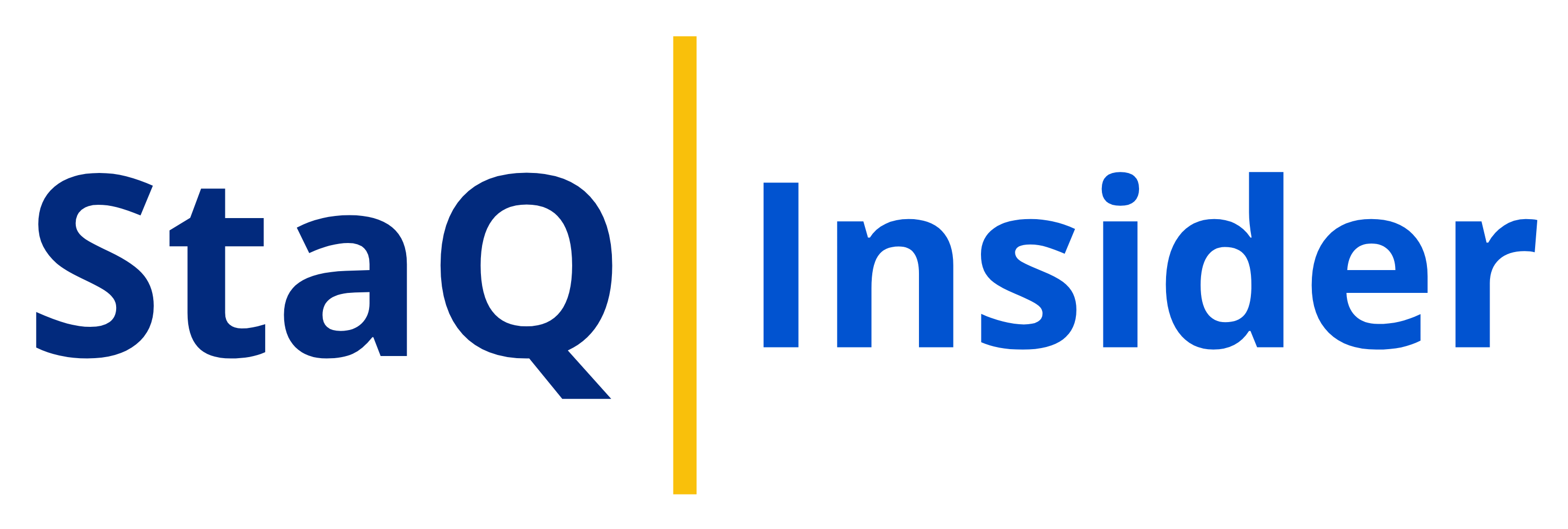E-commerce businesses today operate in a dynamic digital landscape where understanding and responding to customer behavior is paramount to success. The secret to unlocking these mysteries lies in visitor behavior intelligence software. This powerful technology goes beyond basic analytics, offering a window into the minds of your customers, their navigation patterns, and hidden purchase roadblocks. But how exactly can e-commerce businesses use this intelligence to craft an unbeatable customer journey? Let’s delve deeper…
What is Visitor Behavior Intelligence Software?
Visitor Behavior Intelligence Software is a type of analytics software that helps businesses understand how visitors interact with their websites or mobile apps. It provides insights into visitor activities, such as which pages they view, how long they spend on certain sections, where they click or scroll, and their overall browsing patterns.
This data helps businesses understand their audience’s behavior and preferences, enabling them to optimize their online experience and make data-driven decisions to improve user engagement, conversion rates, and overall website performance.
How Can Visitor Behavior Tracking Help E-Commerce Applications?
Visitor behavior tracking software can significantly benefit e-commerce applications by providing valuable insights that can enhance performance and drive success. Here are some key ways how e-commerce businesses can improve their performance using visitor behavior intelligence software:
-
Personalization:
Visitor behavior tracking allows e-commerce businesses to personalize user experiences by tailoring content, product recommendations, and promotions based on individual visitor data. This personalization enhances the shopping journey, increases conversion rates, and fosters customer loyalty.
-
Data-Driven Decision Making:
By analyzing visitor behavior, preferences, and engagement patterns, e-commerce businesses can make strategic decisions backed by actionable insights. This data-driven approach enables optimization of websites, marketing campaigns, email campaigns, and product offerings for maximum impact.
-
Understanding Customer Profiles:
Visitor behavior tracking software provides detailed insights into customer profiles, including basic data like name, email address, age, and gender, as well as more in-depth information like income levels and household addresses. This comprehensive customer profile empowers marketing teams to create hyper-targeted campaigns that resonate with customers.
-
Enhanced Marketing Strategies:
E-commerce businesses can use visitor behavior data to refine their marketing strategies, improve product development, and create content that aligns with customer interests. By understanding user behavior, businesses can optimize their tactics for each marketing channel and improve overall performance.
-
Reducing Bounce Rates:
Visitor behavior tracking helps identify the reasons behind increased bounce rates on e-commerce websites. By analyzing data such as heatmaps and session replays, businesses can address issues like inconsistent branding, slow page load speeds, unengaging content, and lack of trust elements, ultimately reducing bounce rates and improving user retention.
-
Cart Abandonment Analysis:
Visitor behavior tracking software can help identify patterns and reasons behind cart abandonment. By analyzing this data, e-commerce businesses can implement strategies like targeted remarketing campaigns, personalized incentives, or streamlined checkout processes to reduce cart abandonment rates and increase conversions.
-
A/B Testing and Optimization:
Utilizing visitor behavior data, e-commerce businesses can conduct A/B tests to compare different versions of web pages, product listings, or marketing campaigns. By analyzing user interactions and conversions, businesses can optimize elements like call-to-action buttons, product images, pricing, and messaging for improved performance.
-
Customer Journey Mapping:
Understanding the complete customer journey from initial visit to purchase is crucial for e-commerce success. Visitor behavior tracking software enables businesses to map out customer touchpoints, identify pain points, and optimize the user experience at each stage to drive conversions and foster customer loyalty.
-
Segmentation and Targeting:
By segmenting visitors based on behavior, demographics, or purchase history, e-commerce businesses can create targeted marketing campaigns that resonate with specific audience segments. Visitor behavior intelligence software helps in identifying high-value segments, tailoring messaging, and offers to increase engagement and drive sales.
-
Predictive Analytics:
Advanced visitor behavior tracking tools can leverage predictive analytics to forecast future trends, customer behavior, and potential opportunities. By analyzing historical data and patterns, e-commerce businesses can make proactive decisions, anticipate customer needs, and stay ahead of the competition in a dynamic market environment.
Features to Consider When Buying Visitor Tracking Software for E-Commerce
When looking for visitor behavior software for e-commerce, there are key features to consider to ensure you make an informed decision that aligns with your business needs. Here are some essential features to look for in visitor behavior intelligence software as an e-commerce business owner:
-
Real-Time Visitor Tracking:
Opt for software that provides real-time tracking of visitor behavior on your website. This feature allows you to monitor user interactions as they happen, enabling you to make timely adjustments to improve user experience and conversions.
-
Visitor Segmentation:
Choose software that offers the ability to segment visitors based on various criteria such as demographics, behavior, and preferences. This feature helps you tailor your marketing strategies and personalize user experiences for different visitor segments.
-
Heatmaps and Click Tracking:
Look for software that includes heatmaps and click tracking functionalities. Heatmaps visually represent where visitors click, move their mouse, and scroll on your website, providing valuable insights into user engagement and behavior.
-
Visitor Recordings:
Opt for software that allows you to record visitor sessions to replay and analyze how users navigate your site. This feature helps you identify pain points, areas of improvement, and understand user behavior more comprehensively.
-
Conversion Rate Optimization Tools:
Choose software that offers tools to optimize conversion rates by analyzing visitor behavior. Features like A/B testing, funnel analysis, and goal tracking can help you identify and address conversion bottlenecks effectively.
-
Form Analytics:
Consider software that provides form analytics to track how visitors interact with forms on your website. This feature helps you optimize form fields, layouts, and processes to enhance user engagement and increase form submissions.
-
Integration Capabilities:
Ensure that the software can integrate seamlessly with your existing tools and platforms such as CRM systems, e-commerce platforms, and marketing automation software. This integration enables you to leverage visitor behavior data across your business ecosystem.
By prioritizing these key features in visitor behavior intelligence software, you can make an informed decision that empowers you to understand, analyze, and optimize user interactions on your e-commerce website effectively.

Popular Visitor Behavior Intelligence Software Options for E-Commerce
The world of visitor behavior intelligence software is brimming with options for e-commerce businesses. Here are a few popular choices to consider:
1. Ruler Analytics: Ruler Analytics tracks visitor interactions from the first touchpoint to conversion, attributing revenue to different touchpoints and integrating with CRM systems.
2. HotJar: HotJar offers heatmaps and session recordings to visualize visitor navigation and engagement, aiding in optimizing user experience and conversion rates.
3. Google Analytics: Google Analytics allows monitoring and analysis of user interactions, providing valuable insights into visitor behavior, preferences, and engagement on websites.
4. Fathom: Fathom offers flat monthly fees based on active users and a free tier for low-traffic websites.
5. Funnel.io: Funnel.io specializes in marketing analytics, providing data integration and analysis tools to understand the complete customer journey.
6. Matomo: Matomo is an open-source alternative to traditional analytics tools, focusing on user privacy while offering insights into user behavior.
7. Mixpanel: Mixpanel is a product analytics tool that emphasizes user-centric data tracking to optimize products and services for enhanced user satisfaction.
8. Crazy Egg: Crazy Egg offers heatmaps, scroll maps, and user recordings to visualize visitor behavior and interactions on websites, helping businesses optimize their web design and user experience.
9. Mouseflow: Mouseflow provides session replay, heatmaps, funnels, and form analytics to track and analyze visitor behavior, enabling businesses to identify areas for improvement and increase conversions.
10. Lucky Orange: Lucky Orange offers features like heatmaps, visitor recordings, live chat, and conversion funnels to help businesses understand visitor behavior, troubleshoot issues, and enhance user experience for improved conversions.
Remember, the best option depends on your specific needs and budget. Consider factors like the size of your business, the complexity of your website, and the level of data analysis you require.
Potential Drawbacks or Limitations of Using Visitor Tracking Software
Some potential drawbacks or limitations of using visitor behavior intelligence software in e-commerce applications include:
-
Overwhelming Data:
Visitor behavior intelligence software can generate a vast amount of data, which may be overwhelming for businesses to analyse effectively. Sorting through this data to extract actionable insights can be time-consuming and challenging.
-
Privacy Concerns:
Collecting and analysing visitor behavior data raises privacy concerns, especially with regulations like GDPR and CCPA in place. Businesses need to ensure compliance with data protection laws and maintain transparency regarding the data collected from visitors.
-
Interpretation Challenges:
Interpreting visitor behavior data accurately can be complex. Understanding why visitors behave in a certain way requires careful analysis and interpretation, which may not always lead to clear conclusions or actionable insights.
-
Cost:
Implementing and maintaining visitor behavior intelligence software can be costly, especially for small businesses with limited budgets. The initial investment, subscription fees, and additional costs for customisation or integration can strain financial resources.
-
Technical Expertise:
Utilising visitor behavior intelligence software effectively often requires technical expertise. Businesses may require skilled professionals to setup, configure, and interpret the data generated by these tools, increasing the complexity.
-
False Positives and Negatives:
Visitor behavior analysis tools may sometimes produce false positives or false negatives, leading to incorrect assumptions about user behavior. Relying solely on automated insights without human validation can result in misguided decisions.
-
Limited Scope:
Some visitor behavior intelligence software may have limitations in terms of the depth or breadth of data it can provide. Businesses might lack a full understanding of visitor behavior or overlook vital insights because of these limitations.
Choosing the right visitor behavior tracking software from the vast array of options can be an overwhelming challenge. That’s where STAQ.ai comes in to simplify the selection process for you. Our team at STAQ.ai takes the time to understand your specific requirements, thoroughly evaluates different software solutions, and provides tailored recommendations that align perfectly with your business’s unique needs.




